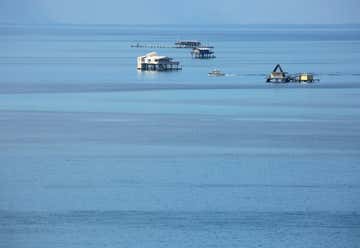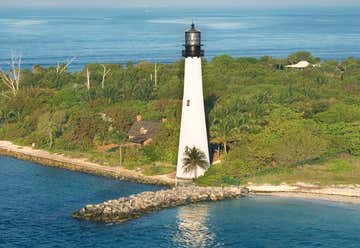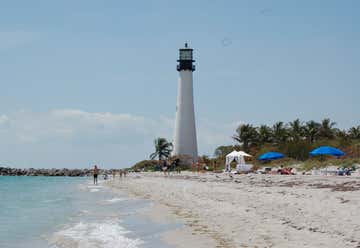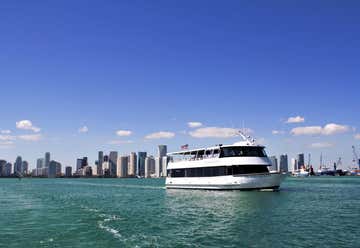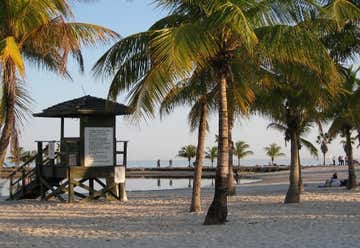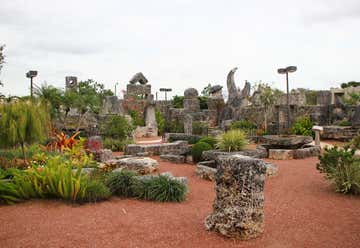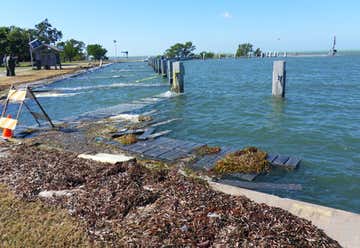Biscayne National Park is one of the most fascinating parks in the whole country, despite the fact that almost the entire park is located in Florida's Biscayne Bay. Biscayne's history is pretty legendary. What other park can say it was home to conquistadors, pirates, gangsters, and presidents?
When Ponce de Leon arrived in what is now the U.S., the Biscayne area was one of the first spots he explored. Later on, in the 18th century, two pirates (both weirdly named "Black Caesar") called the region home, and that's how the park's Caesar Creek got its name.
The Florida Keys were used for growing limes and pineapples, and in the 1920s, the popular and exclusive Cocolobo Cay Club opened. During the club's time, it catered to presidents, actors, athletes, and more.
Whether you're visiting the Keys to camp or check out the historical sites, or you just want to relax and enjoy some amazing fishing, Biscayne is unexpectedly full of things to see and do. Here are some of the coolest things you can expect to see and learn about when you visit.
Some tips for visiting Biscayne National Park:
95 percent of the park is underwater, so if you're just casually visiting, you can head to the visitor center where you can find a guided boat tour, a museum, and more. Otherwise, you'll need to rent or charter a boat. Luckily, the park is close to Miami, where boat rentals are widely available.
Naturally, the park is ideal for saltwater fishing. You can catch snapper and rock bass, among other fish, and you can even catch lobsters, crabs, and shrimp! Spearfishing is also allowed in the park, if you're looking for something a little different and more exciting. Since you're fishing in an area with lots of protected species, they offer free classes on fishing awareness, or you can charter a cruise to take you out and guide you. Either way, you're practically guaranteed to catch something to bring home for a little fish fry.
You can also find snorkeling and scuba diving in the park. There are several shipwrecks that make for awesome dive sites. But, be warned that because the park protects a coral reef that you should be very careful to not touch or disturb anything, as it's a very sensitive ecosystem.
A very offbeat oceanic attraction near Biscayne is Stiltsville, which got its start in the early 1930s when “Crawfish” Eddie Walker built a stilt shack that he could use to run a gambling operation, since gambling then was only legal one mile offshore. He served beer and chilau, which is a crawfish chowder made from very fresh crawfish (that he caught under his house). The place started to get pretty popular, and more stilt houses began to pop up. By the 1950s, Stiltsville had become the hotspot for Miami nightlife, even the governor of Florida could be found here. Pretty soon, people were grounding old yachts and barges in the mud and turning them into clubs, including the notorious Bikini Club yacht, which had topless sunbathing on the deck, staterooms for rent, and plenty of booze, including free drinks for any woman in a bikini.
The glory days of Stiltsville were brought to a sudden halt when many of the stilt buildings and boats were damaged by Hurricane Betsy in 1965, other stilt houses were washed away by storms even before Betsy blew in. Throughout the 70's and into the 90's, the fate of the remaining stilt houses was in jeopardy, until a petition in 2000 saved Stiltsville. The last few structures were incorporated into Biscayne National Park and the houses are co-cared for by the National Park Service and the Stiltsville Trust. The most stable of the buildings were reinforced and restored, and the ones not deemed viable were taken down. You can actually rent some of the stilt buildings out for yourself, it'll cost a pretty penny and you'll need a boat to get there, but it'll be worth it for the historic experience.
Biscayne is home to at least five shipwrecks, including the remains of the SS Arratoon Apcar. A mid-19th-century steel-hulled steamer that ran aground on its way from Havana, Cuba to Liverpool, England. The crew spent three days trying to save her before bailing out on their lifeboats, and bad weather further pushed her onto the rocks, eventually broke her up and sunk her. She lies in 10-20 feet of water, making it an easy dive site on the park's "Shipwreck Trail."
Just outside the park boundaries lies Key Biscayne, and on the island you'll find the beautiful and historic Cape Florida Lighthouse. A lighthouse has been located here, although the use of it has been inconsistent, since 1825. It's played roles in the Seminole Wars and the Spanish-American War, and even appeared in an episode of "Miami Vice." Climb to the top for awesome views of Biscayne National Park.
Bill Baggs Cape Florida Park is a popular beach just offshore of Biscayne. The white sand and crystal waters make this a popular spot for people looking to escape the hustle and bustle of Miami Beach.
Since the park is mostly underwater, the very best way to explore it is to get on a boat and explore! Island Queen Cruise is a company that offers boat rentals and tours of Biscayne, as well as jet ski and flyboard rentals, sunset dinner cruises, parasailing, and tons more water fun.
The coral formations at Matheson Hammock Park, along with the beach, is a manmade atoll filled with marine life, and the view of Miami make this a lovely place to appreciate the beauty of Biscayne Bay from the safety of land.
If you're in need of some grub that feels as tropical as Biscayne NP's scenery, head to Jamaica Kitchen, a little hole-in-the-wall eatery, for some authentic island cuisine. The patties (meat pies with flaky crusts), jerk chicken and rice plates, oxtail stew, plantains and curries are all out-of-this-world delicious, and reasonably priced, too.
If you've got a sweet tooth, the ice cream at Chill-N Nitrogen Ice Cream is made in a totally different, totally science-y way that makes it extra delicious. Nitrogen, a non-toxic and odorless gas that's super cold, is used to quickly freeze the ice cream mixture, meaning the texture is even smoother and less icy than most frozen treats. They custom-freeze each order, adding flavors and mix-ins to your ice cream or yogurt, making it a fun experience, too.
The coral reefs in the park have helped to contribute to some pretty interesting and pretty iconic things in the area as well, like the famous roadside attraction, known as the Coral Castle...and the story of how it was built is even wilder than the place itself.
After being left at the altar by his love, Edward Leedskalnin left his home country of Latvia for America. On the way, he was stricken with tuberculosis...but he miraculously recovered, claiming he treated himself with magnets, although he refused to explain how or why. Once he settled in Florida in 1923, he began work on his home, a massive castle made of coral limestone. And this is where things get really weird: he never let anyone watch him while he worked. All we know of how he built the castle is the report of several teenagers who allege that they saw the 5'0", 100-pound heartbroken Latvian moving massive bricks of stone "like hydrogen balloons," and his claim that he used what he called a "perpetual motion holder." Edward claimed that he was able to build his castle because he had "discovered the secrets of the pyramids."
Regardless of how he built the castle, it's impressive. 1,000 tons of rock have been carved into a two-story castle, assorted furniture (including a throne and 25 rocking chairs), a Polaris telescope, a water well, a fountain, a grill, and statues of stars and planets. The highlight of the estate was the stone rotating gate that, before the mechanism rusted out, moved so smoothly that a child could open it with the push of one finger. Edward worked on the castle until his death in 1951. He had made money by offering tours and by selling pamphlets. Because he died with no known heirs, the castle was turned into a tourist attraction, and placed on the National Register of Historic Places.
When you need a place to stay for the night, the campground on the island of Boca Chita Key, is pretty bare-bones (toilets and picnic tables, but no freshwater, showers, or electricity), yet it remains incredibly popular. The island also features some hiking, and a 65-foot ornamental lighthouse built in the 1930's by the island's former owner. If it's open when you're there, you can climb to the top for awesome views!
Elliott Key is the northernmost island in the Florida Keys, and it, like Boca Chita, is only accessible by boat and offers nice tent camping. Elliott Key happens to have some fresh water, and cold showers, as well as fishing, swimming and hiking.
If you don't have a boat, or are prone to seasickness, then you can still appreciate the park's unique beauty from the Dante Fascell Visitor Center. Featuring a museum, an art gallery, limited boat tours, and some walking paths, films, and tons more, it's a quick and easy way to learn all about Biscayne.
The best time to visit Biscayne National Park: Weather-wise, probably spring, before it gets too hot...but the party scene and fair weather attract a lot of people. If you're looking to avoid the crowds, try January or February, it rarely dips below 60 degrees, so you can camp year-round here. Fall is hurricane season, though, which is probably not a great time to be camping on an island or boating on the ocean, so keep an eye on the forecast when visiting then.
Roadtrippers
Roadtrippers helps you find the most epic destinations and detours—from roadside attractions to natural wonders and beyond.


